By Olivia Kemp, Sustainable Fisheries Programme Manager, Toliara, Madagascar
Andavadoaka beach, 6am. As our team loaded up the comarine pirogue with our gear, we scanned the cloudy skies for signs of what weather surprises might be in store for us that day and in the days to come. We had travelled up from Toliara tentatively, having been forced to cancel our mission the week before due to a “small” cyclone in the Mozambique Channel, wreaking havoc on our coastal travel plans. And even now, the skies seemed to be teetering on the brink of another dramatic display of climactic prowess.
We pushed on, hoping that our dry bags were well sealed. Our team of four opted for the motorised pirogue over the zebu cart to take us up the coast, given our equipment and time constraints. Our destination was the fishing village of Belavenoke. There, and in other villages in the days to come, we would hold the first ever dina training specifically designed for female fishers.
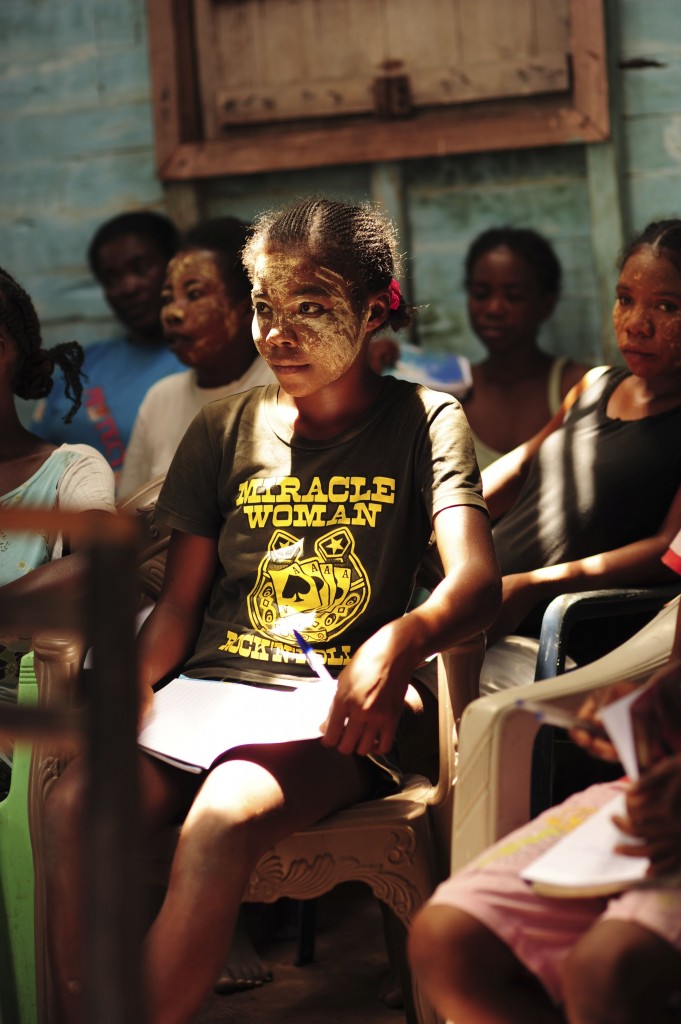
What are dina?
Dina are an important part of the traditional justice system at the village level in Madagascar. Traditionally, dina relate to sacred places, taboos (fady) and prohibited practices relating to the interaction of community members. In recent times, the government has incorporated dina into the official legal system and has been encouraging communities to create dina regarding the management of natural resources. Dina can therefore now be imbued with the full power of law within Madagascar’s legal system.
Over the past decade, dina related to fisheries management have played a particularly important role in Madagascar’s growing network of locally managed marine areas (LMMAs). Nowhere is this more evident than along the country’s southwest coast, where a partnership between NGOs and Madagascar’s Ministry of Fisheries (through PACP or Projet d’Appui aux Communautés des Pecheurs, an African Development Bank-funded initiative) has promoted the use of dina for managing octopus reserves along more than 400 kilometers of coastline. In addition to octopus fishery closures, dina have also been established by local management associations for mangrove fishery closures, as well as bans on the use of destructive fishing equipment and the delineation of permanent marine reserves to protect coral reefs. These dina are determined and enforced by each village-level dina committee, with fines imposed for infractions of the rules. A portion of these fines are used to continue dina enforcement, with the rest being donated to the local community to use as they wish, providing an incentive for people to report activities they witness that may be breaking their local dina.
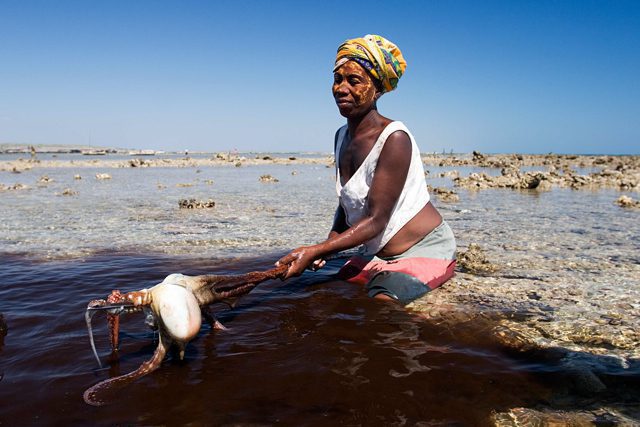
Octopus fishing in the Velondriake LMMA is particularly important for women as they are able to glean on reef flats by foot using simple, hand-crafted spears. Despite the fishery’s importance to women, community management associations in charge of decision-making and enforcement of octopus reserves are consistently made up of mostly men. To investigate the reasons behind this, we ran a social survey in late 2013, and a series of focus group discussions. The results revealed that women had limited knowledge of fishing regulations and the reporting process for any dina infringements they witnessed. The women explained that they did not feel confident enough to participate in management meetings, and were therefore often left without key information surrounding the fisheries in which they play such a vital role.
With this in mind, our support to community fisheries management is now focusing on empowering female fishers, the primary resource users (over 90% of octopus gleaners in the region are women and girls), to be more involved in fishery closure organisation and decision-making processes. We’ve dubbed this the “tsy manavaky” initiative, which means “all-inclusive”, or “non-discriminating”.
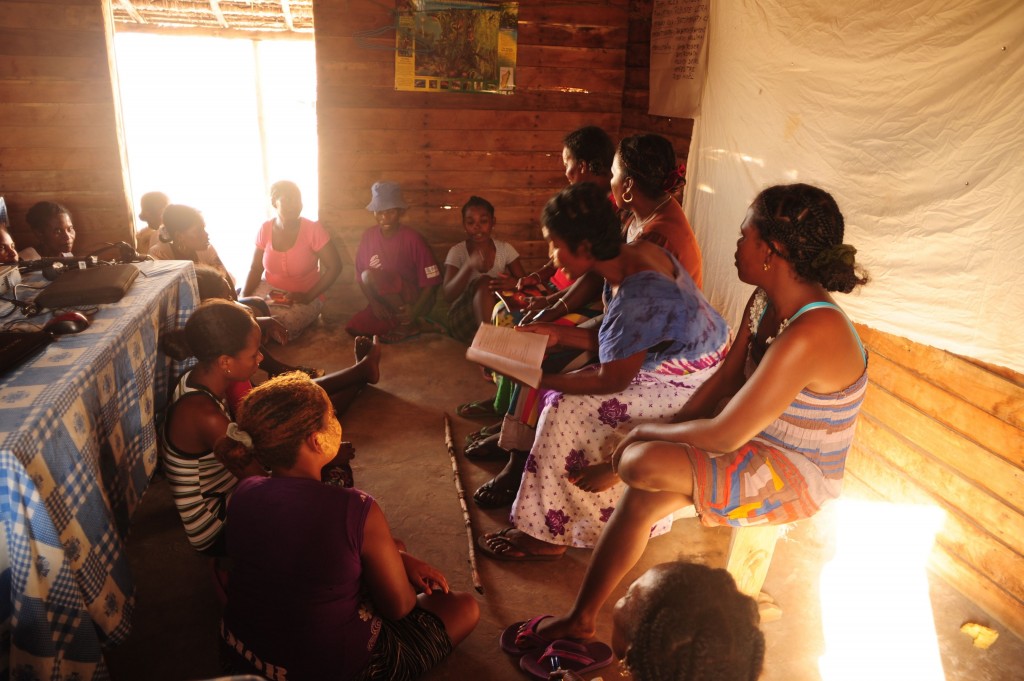
We first selected five villages in the Velondriake area to participate in fisheries dina training workshops, which will be expanded over the course of this year to reach an additional 15 villages. With group sizes restricted to just 15-20 women, messages can be clearly communicated and discussed, with the trained women then able to share their knowledge in a peer-to-peer learning style within the community. Using real-life examples that they can relate to and understand, we designed a training package for women only, resulting in a learning space they felt comfortable and confident in to encourage greater engagement. We will be monitoring women’s involvement in fisheries management over the coming months to measure the impact of this training.
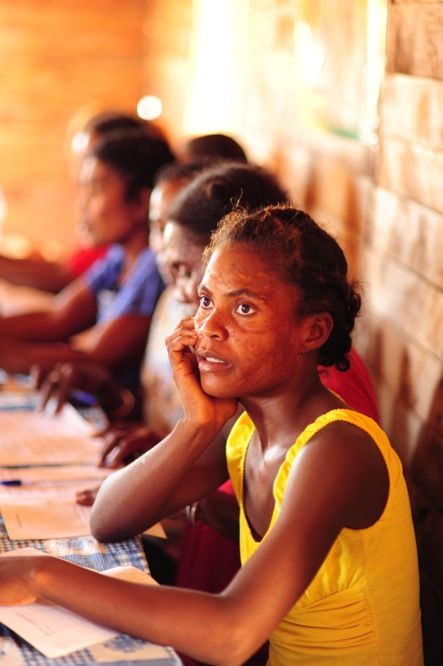
Belavenoke, a fishing village of about 500 people within the Velondriake LMMA, is one of the first five villages where we facilitated our dina training workshop…
As our pirogue docked on Belavenoke’s beach, the women were eagerly awaiting us in a small community shelter overlooking the reef flats where they glean for octopus every day. Today, however, there was no gleaning to be done, as we were in the midst of the national six-week octopus fishery closure. We began our training with a set of questions to gauge the knowledge level in the room. The women, aged between 17 and 45, had mixed levels of understanding of what the dina meant, but none of them fully understood how it is enforced and what role they could play in ensuring the protection of the resource that the majority of them rely on so heavily for income.
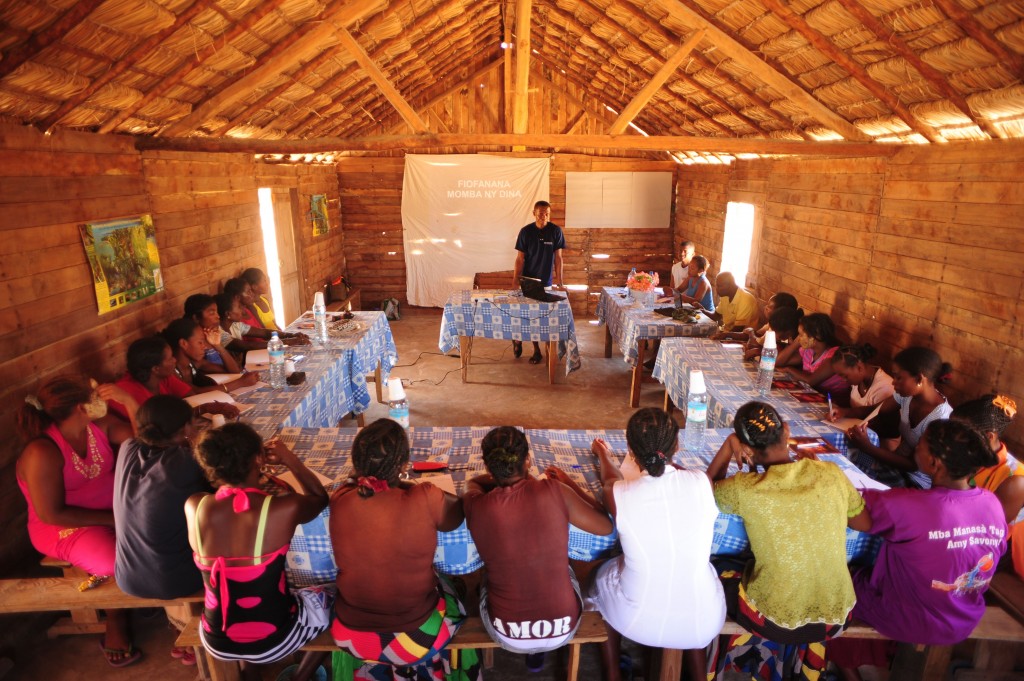
Over the course of an interactive day, our team ran the women through all the basics of the dina, with diagrams and role-play activities proving useful tools to help women to relate to the topic. A mini maths lesson in percentage calculations was even included, enabling them to better understand how dina fines are calculated and divided up. Many of the women had not completed school past the age of 14, so this was a challenging but rewarding part of the day for them. The women admitted that they lacked the confidence to attend octopus reserve management meetings and even if they did attend these meetings, they rarely spoke up. They explained to us that their limited understanding of the dina, and the regulations surrounding the octopus reserves, was a large part of why they did not feel confident to contribute to these discussions in their communities.
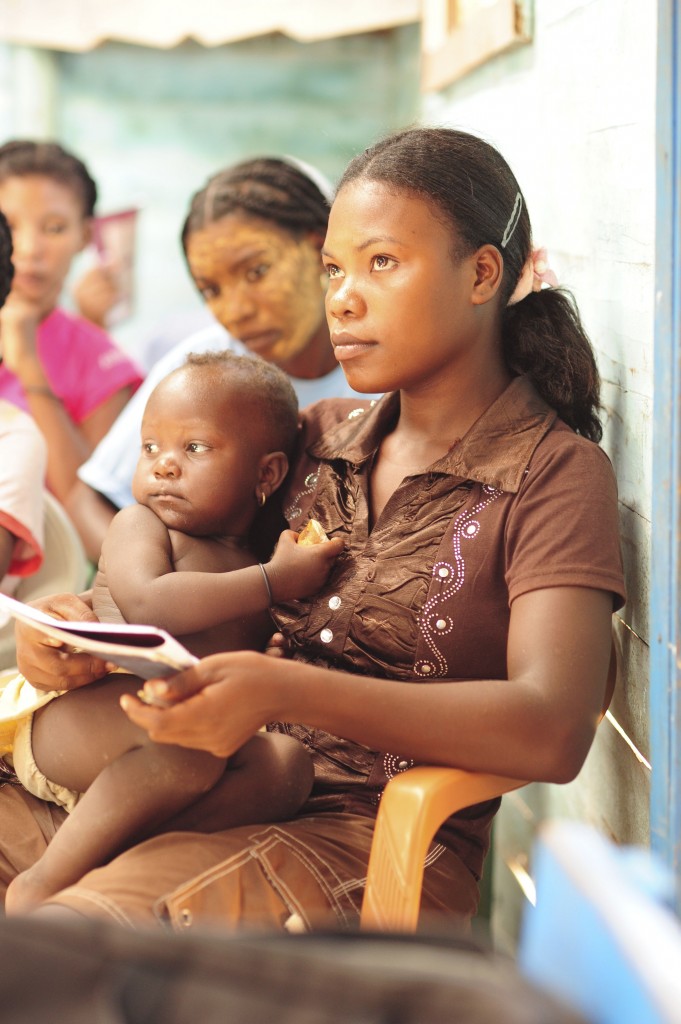
As the skies darkened outside and the afternoon rains began, our team packed up and awaited a break in the weather to motor back down the coast upon rough seas, delivering us relatively dry on the Andavadoaka beach to unpack and prepare for the next training session.
The next day was a simpler logistical feat, as we met with women from the village of Andavadoaka itself, a fishing community of roughly 3,000 people, which has been BV’s adoptive home in Madagascar for ten years now. Here we encountered a slightly higher level of knowledge due in part to the many information and outreach campaigns we’ve run here over the past decade. However, there were still plenty of things to discuss, perhaps most importantly how to develop the confidence to participate in dina enforcement negotiations, achieved by role-play activities and reenactment, which the women took to with great enthusiasm.
“The training is helping me to understand the dina in Velondriake. It is giving us women the power to be part of community meetings and dina enforcement. The knowledge from the training makes me feel stronger to be involved in the management of our resources.”
Felicia, 40 years, Andavadoaka
“These things about the dina are really new for me, but I think it’s important. Now we can participate in octopus reserve management, and I can attend meetings and speak for women’s benefits.”
Voahirana, 23 years, Andavadoaka
Our third day of training was another pirogue trip away, this time southwards down the coast to the village of Ampasilava, where a school building with a rainbow-painted roof sheltered us from the falling rain. The women of Ampasilava were full of excited laughter that day, which soon became infectious, even after our portable generator decided it did not want to work in such damp conditions and our PowerPoint presentation was rendered useless. Switching to role-play activities, reenacting a dina infringement and the ensuing negotiations with all levels of the community, we spent the afternoon being thoroughly entertained by some great acting skills.
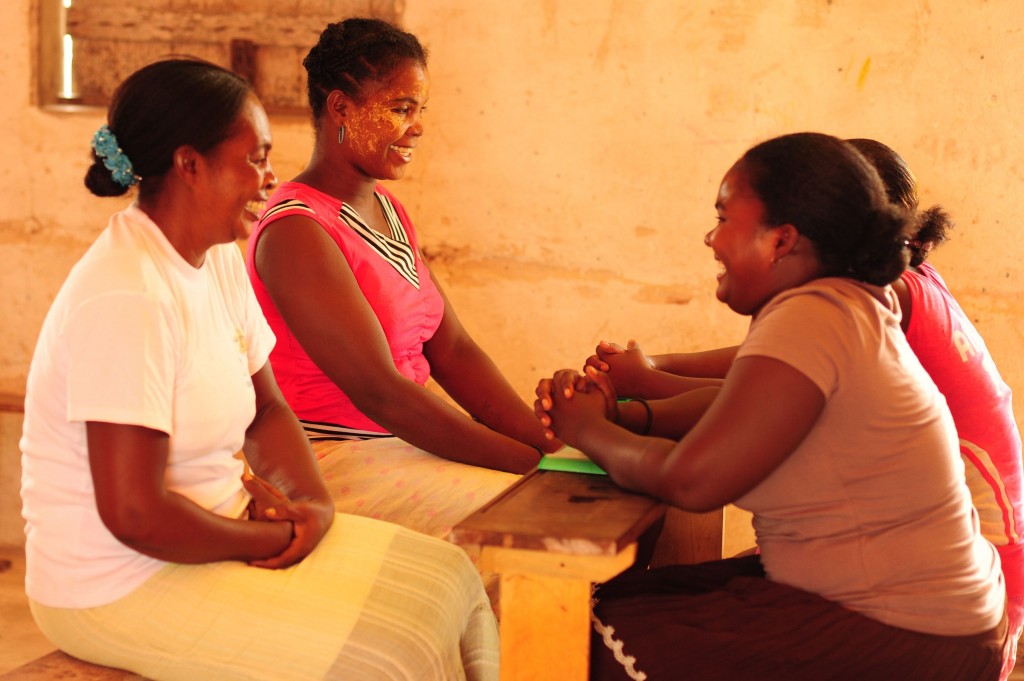
“The training is making me stronger in decision-making and has motivated me to go to meetings.”
Vaonirina, 36, Ampasilava
To date, we’ve engaged more than 50 women from across Velondriake in these dina trainings. Many of the women in attendance had no previous knowledge of this traditional system of social and natural resource management, so these sessions are proving to be a welcome opportunity for them to build their confidence for engaging in fisheries management. While we’re realistic about the pace of change, and significant barriers still exist to women’s’ involvement in management, we’re confident that we’re heading in the right direction to ensure that the LMMA movement in southwest Madagascar is truly “tsy manavaky“.
—
Blue Ventures’ sustainable fisheries programme is currently supported by grants from the UK Department for International Development and the Leona M. and Harry B. Helmsley Charitable Trust.

